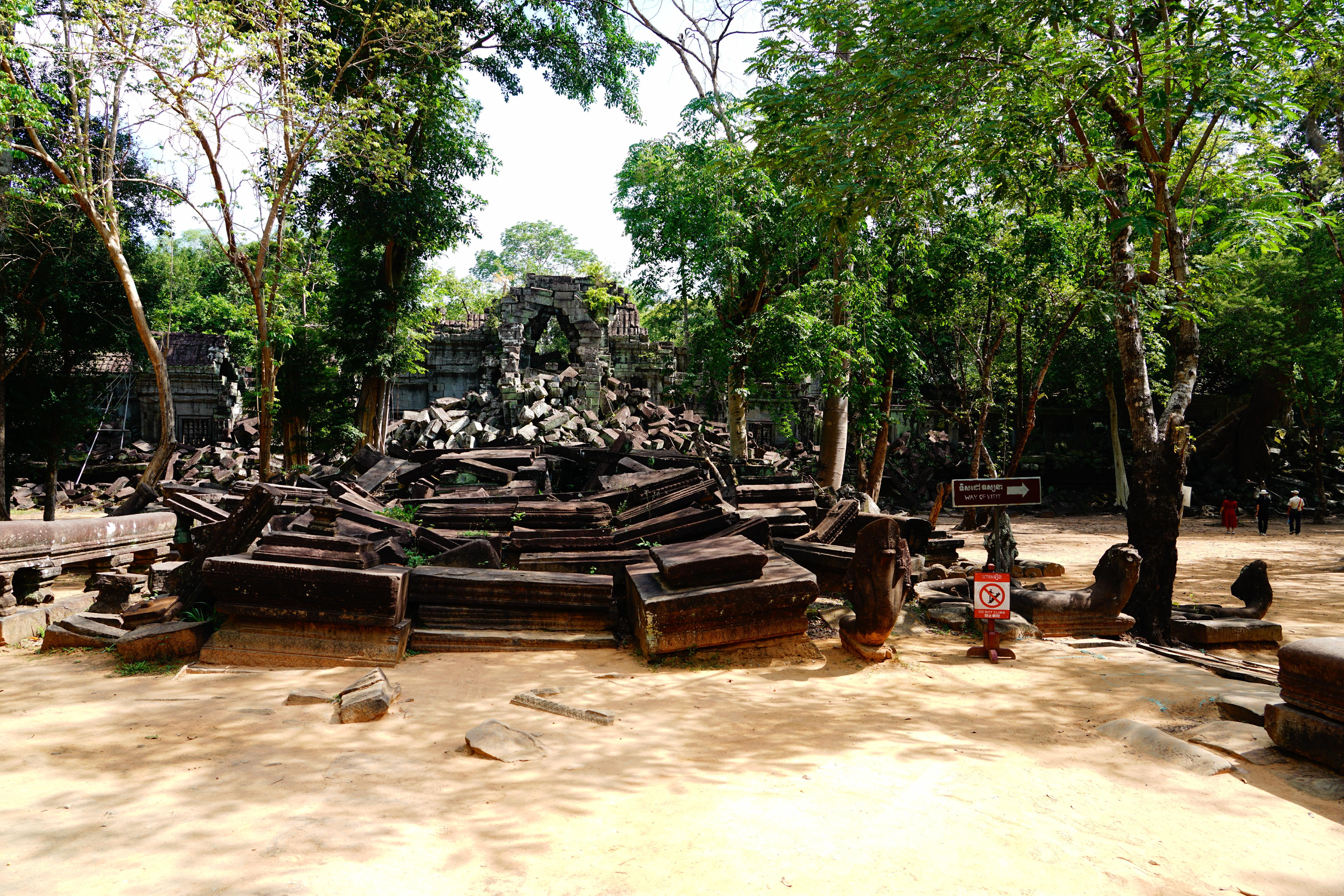Prasat Beng Melea, Cambodia
This is a very large Hindu temple whose original name is lost, now in the countryside, but when it was built in the early 1100s, it was the center of a bustling city. Surrounded by an artificial moat and close to a small quarry that supplied some of the stone, the main quarry for most Khmer temples is 4 miles away, all accessible by canals, as the Khmer were masters of water management.Dedicated to Vishnu, it seems to have suffered the same general decline as other temples in the 1300s after the Khmer empire was destroyed by the Siamese.
Now, a ruin in every sense of the word, it is a great, if under visited, site included in the Angkor pass.
The Arrival
My driver and friend Lucky, dropped me off on the west side entrance. The south side is still by a village, and you will be approached endlessly by hawkers selling things. Some decent, some are less than worth your time. The children will follow you the longest, and while they teach English in the schools, the word "no" doesn't seem to have been covered in class. The children will tell you they need money to go to school. They don't.The west entrance was almost deserted, and I avoided being accosted on my entrance to the temple.
Causeways and Paths
Originally everything here was well paved, but time has taken its toll, and they are covered, or fallen in the temple bounds. Paths now may or may not have been normal ways of travel back in the day, but they are there now.Exterior Ruins
The outer portions of the temple are in a frightful state. While the Khmer could cut stone to high precision, they had a lesser understanding of weight loads and foundation shifts in the ground they placed them on, and after 900 years of rain and mud, eventually thousands of tons of rock shifts, and then, they fall.Inner Temple
There is a great boardwalk that brings you through the inner sections (and there are mosquitos too, along with malaria risk, so prepare). This shows some of the buildings that have not succumbed to gravity. Mostly interpreted as libraries, they were used to store scrolls of Hindu religious works, and accounting items (like how much of a crop were donated). Very few of these have survived to modern times.Temple Details
Not only built from thousands of blocks, all the entry and walking areas were covered in Hindu legends. Highly skilled craftsmen spent years producing these. Also, some other cool things I found wandering.The Quarry
Extremely close to the temple, another site with no known name, is a set of sandstone quarries that provided a good amount of material for the buildings. Clearly evident stone extraction and cuts are still visible after so many centuries.
The entry road from the western side
Balustrades used to frame every road
From nowhere to unknown, kinda exiting
Seems it was easier to have built this instead of leveling the ground
Unpaved but heavily used
Seems conflict also caused problems to the temples
I often wonder if there was warning before they fell and how loud it was
If a temple falls in the forest and no one is around to hear it, does it make a sound?
Were these fallen, or moved to clear another spot?
So many you just walk on the stones
Some of the boardwalk taking you over the unstable, and dangerous fallen pieces
One library, I think
Definitely a library
A hallway that is intact, there used to be over a dozen of these in the complex
And what it looks like in the hallway
A library? Probably a library, let's call it a library
This was a hall
Not quite discovering the arch, but darn close
Master stonework, still clear after all this time
With 1000s of ancient sites, this is what can be done for now to many of them
Part of the moat surrounding the city. The canals are now mostly blocked
The north entrance river, floods in rainy season
The ancient, dangerous, but sometimes helpful, Naga
In the jungle, alone
The north bridge across the river
A temple off in the forest
Seems the didn't need this stone
The water was diverted to move the stones easier
Decades of cutting
You can see the cutmarks, almost looks like a saw
And the river heading toward Beng Melea. Grueling work assisted by Elephants
Summary
50 miles from Siem Reap, very lightly visited. I spent 2 hours and only saw an Instagrammer and her IG Widower taking pictures.You want to see a temple where you have unlimited photo opportunity without others in the shots? Want to feel like you are truly alone, in the jungle, exploring a newly discovered place? This is the temple for you! I absolutely loved the ruinous solitude here.

